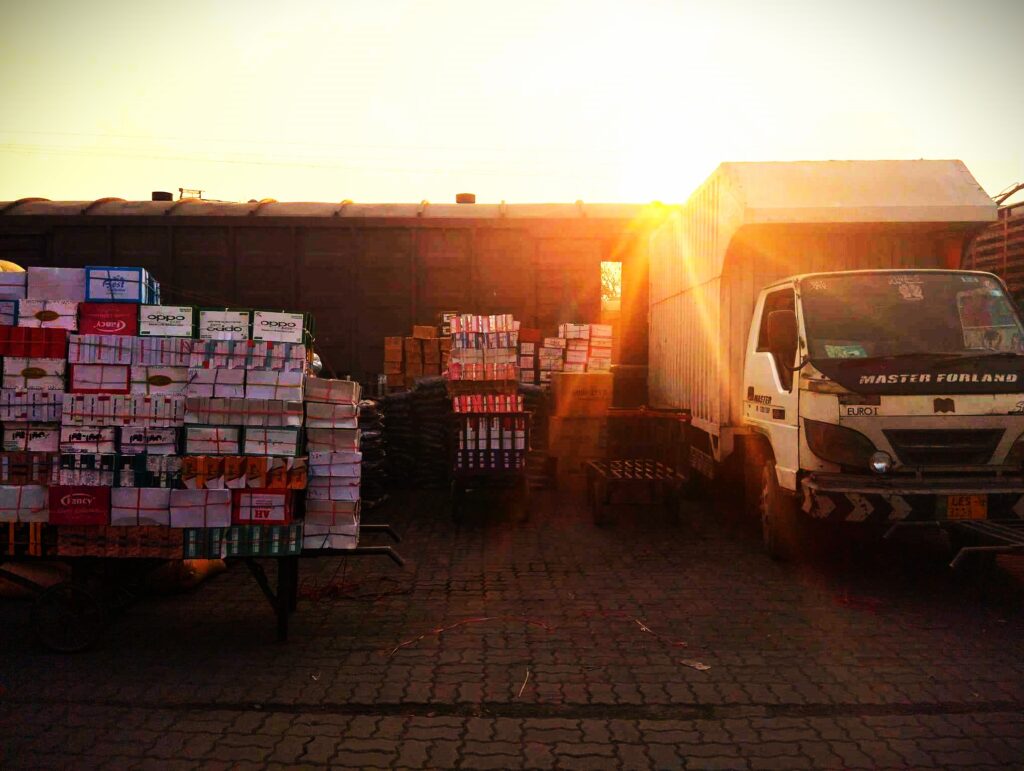Rail Freight vs Truck: Navigating the Shipping Landscape
In today’s dynamic logistics and transportation industry, the debate of rail freight vs truck remains a central topic for shippers, logistics managers, and businesses alike. With the focused keyword Rail Freight leading the conversation, this comprehensive blog delves into every aspect of shipping by rail vs truck—from cost considerations to environmental impacts—and examines real-life applications, including services offered by industry experts like Chand Sitara Cargo.
Understanding Rail Freight
Rail Freight has emerged as a formidable option for transporting bulk goods over long distances. Its reliability, energy efficiency, and ability to move large quantities of cargo make it particularly appealing for industries that require steady, high-volume shipments. However, to truly understand its benefits, it’s essential to compare it against trucking.
Advantages of Rail Freight
- Cost Efficiency Over Long Distances:
When asking, “is it cheaper to ship by train or truck?” many shippers lean toward rail freight, especially for long hauls. Rail can often offer lower costs per ton-mile compared to trucking, which is reflected in questions like “how much does it cost to ship by rail?” and “shipping by train cost” queries. - Environmental Benefits:
Rail freight emits fewer greenhouse gases per ton-mile compared to trucks, aligning with modern sustainable shipping practices. - Bulk Handling:
Rail systems are designed to handle large volumes, making them ideal for bulk commodities. This capability significantly reduces the cost to ship by rail for heavy or oversized loads.
Disadvantages of Rail Freight
Despite its benefits, rail freight is not without its challenges. Limited flexibility, longer transit times for short distances, and dependency on rail infrastructure can impact overall delivery times and convenience. For businesses requiring rapid or door-to-door delivery, the option “shipping by rail vs truck” must be evaluated carefully.
The Trucking Alternative
Trucking remains a popular method for shipping, especially for short to medium distances. Its advantages lie in flexibility, door-to-door service, and extensive network coverage. However, when comparing the cost to ship by rail with trucking, several factors come into play:
- Speed and Flexibility:
Trucks offer more direct routes and can provide faster delivery times for smaller shipments or when time is of the essence. - Accessibility:
Unlike rail freight, trucks are not limited by fixed routes, making them a practical choice for areas not served by rail infrastructure. - Cost Considerations:
While trucks might seem more expensive over long distances, they excel in scenarios that require rapid, smaller, or more flexible shipments. Hence, the question “is it cheaper to ship by train or truck?” often depends on the specific shipping needs and distances involved.
Comparing Costs: Shipping by Train vs Truck
When evaluating shipping by train cost, several variables come into play including fuel efficiency, cargo volume, and distance. Here’s a closer look:
- Fuel Efficiency: Rail systems are generally more fuel-efficient than trucks, reducing operating costs over long distances.
- Cargo Volume: Rail freight can transport large volumes in a single go, resulting in lower per-unit costs.
- Infrastructure and Handling: Trucking may require additional handling and coordination, which can add to overall costs.
Thus, when pondering “how much does it cost to ship by rail?” or assessing if “is rail freight cheaper” compared to trucking, it’s clear that rail freight often wins on cost-efficiency for large, long-distance shipments.
How to Ship by Train
For those wondering “how to ship by train”, the process involves several key steps:
- Planning and Consultation:
Start by consulting with experts like Chand Sitara Cargo. They can guide you through the intricacies of rail shipping, ensuring you meet all regulatory and logistical requirements. - Booking and Scheduling:
Secure your shipment by scheduling with a reliable rail carrier. This involves coordinating pick-up times, transit schedules, and ensuring that your cargo is properly loaded. - Loading and Transport:
Once on board, your cargo will be secured and transported over rail networks. The reliability and predictability of rail schedules add to its appeal, especially for bulk shipments. - Delivery Coordination:
Finally, integrate last-mile delivery, if necessary, through trucking or local distribution channels to ensure your shipment reaches its final destination.
Real-World Applications: Chand Sitara Cargo
Companies like Chand Sitara Cargo are at the forefront of bridging the gap between rail freight and trucking solutions. By offering a hybrid approach, they provide clients with flexible options tailored to the unique needs of each shipment. Whether you are considering shipping by rail vs truck or evaluating shipping by train cost, Chand Sitara Cargo stands out as a trusted partner in logistics.
Their expertise not only simplifies the process of “how to ship by train” but also offers valuable insights on optimizing costs and delivery times. For businesses weighing the “cost to ship by rail” against other methods, partnering with experienced providers can be the key to operational success.
Conclusion
The decision between rail freight and trucking ultimately hinges on your specific shipping needs, volume, distance, and budget. Rail Freight offers significant cost savings and environmental benefits for large shipments over long distances, making it a viable alternative to trucking. Conversely, trucks provide the speed and flexibility required for shorter, time-sensitive deliveries.
By considering factors such as shipping by train cost, is it cheaper to ship by train or truck?, and how much does it cost to ship by rail?, shippers can make informed decisions that align with their operational goals. With expert guidance from industry leaders like Chand Sitara Cargo, navigating the complex landscape of modern logistics becomes a streamlined process.
Whether you are new to rail shipping or exploring alternatives, this detailed comparison provides the insights needed to choose the most efficient and cost-effective method for your cargo needs. Happy shipping!

